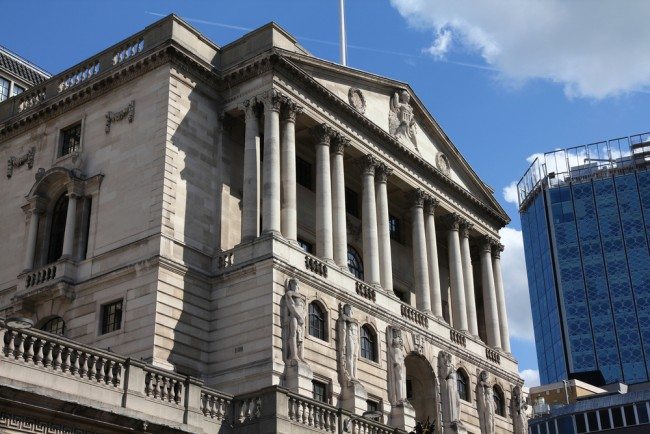In a striking change of tone from the governor’s comments last month, when Mark Carney suggested that lift-off could be considered around “the turn of the year”, the Bank’s latest economic outlook pointed to no change until well into 2016.
The message was driven home by the minutes to this month’s decision, unveiled for the first time alongside the announcement. Only one member of the nine-strong monetary policy committee voted for an increase, confounding predictions that two might have moved. Rates were left at 0.5 per cent for a 78th month running and quantitative easing maintained at £375 billion, as £16.9 billion of gilts maturing next month are reinvested in government debt.
Ian McCafferty, an external member, was the sole outlier — warning of a “more significant overshoot of inflation following its return to the target” of 2 per cent by mid-2017. There was an indication that others were close to joining him, however. The minutes said that “some members saw upside risks to the inflation forecast”. Markets had expected more dissent and stronger signals that the Bank believed inflation pressures were building. The surprisingly dovish tone sent the pound down 0.6 per cent against both the dollar and the euro, to $1.5506 and €1.4213.
The Times reports that the bank’s assessment suggested that interest rates would follow market expectations, which are for two quarter-point rises next year, starting around May and a further two in 2017, taking the level to just 1.75 per cent in three years’ time.
Several economists said they still expected the first increase to come around February, especially after Mr Carney stood by his claim last month that “the decision as to when to start such a process of adjustment will likely come into sharper relief around the turn of this year”.
“My speech is my personal view, and I’m here representing the committee,” the governor clarified yesterday. “I was very clear I was talking about the decision about whether to raise interest rates, from my perspective, would come into sharper relief around the turn of the year. That is consistent with the forecast we have, in my judgment, today.”
The prospect of another six months of record low rates will come as a blow to savers, for whom one-year fixed rate cash ISAs have been paying a record low of 1.4 per cent. However, the news will come as a relief for borrowers, who are enjoying mortgage costs at an all-time low. Two-year fixed rate deals currently average less than 2 per cent, and about half of households are on fixed rates now.
The Bank’s Inflation Report, published for the first time alongside the minutes and the decision on what had been dubbed “Super Thursday”, showed that the recent oil price fall, the strength of the pound and a weaker than expected job market stayed policymakers’ hands.
Inflation this year is now expected to average just 0.3 per cent, half that projected in May, as oil prices fell 12 per cent in the intervening three months and sterling rose 3.5 per cent.
The Bank expects the consumer prices index to remain at zero for the next two months, and may even dip back into deflation. “It wouldn’t be surprising if we have another month or two of negative inflation,” Mr Carney said.
Extraordinary factors, such as cheap oil and the strong pound, have knocked about 1.5 percentage points off inflation, he added.
While price pressures have receded in the near term, the Bank is more optimistic about GDP growth than it was in May — lifting its forecast for 2015 from 2.5 per cent to 2.8 per cent and predicting third-quarter growth will match the second quarter at 0.7 per cent.
Wages are also expected to be stronger than thought, climbing 3 per cent rather than 2.5 per cent, and productivity will bounce back more quickly this year, at 1 per cent rather than 0.25 per cent. Better productivity will mean that companies can raise wages without raising prices, keeping inflation in check.
The development “augurs well for the sustainability of the recovery”, Mr Carney said. He added: “As the UK expansion progresses, speculation about the precise timing of the first move in the bank rate is increasing. This is understandable and is another welcome sign of the economy returning to normal.
“The likely timing of the first rate increase is drawing closer.”
He repeated that when rate rises do come, they will be “gradual and limited”. Markets currently expect rates to be just 1.75 per cent halfway through 2018, although Mr Carney indicated that they should be higher by then.
Barclays’ economists wrote: “While the message of the Inflation Report was materially more constructive on wages and productivity, inflation forecasts were revised down on sterling appreciation and lower commodity prices.”


